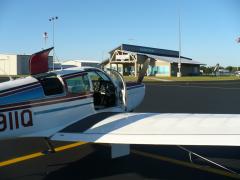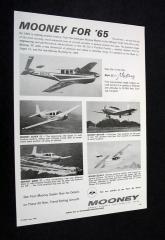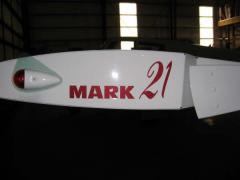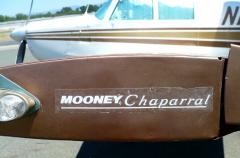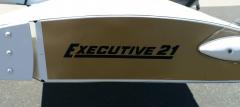-
Posts
2,830 -
Joined
-
Last visited
-
Days Won
9
Content Type
Profiles
Forums
Blogs
Gallery
Downloads
Media Demo
Events
Everything posted by Jerry 5TJ
-
Here are three I know about: Seattle WA M20K for rent at Wings Aloft http://www.wingsaloft.com/rentalfleetmooneym20k.html Palo Alto CA M20TN at West Valley Flying Club www.wvfc.org Sanford NC a club with two M20J http://wingsofcarolina.org/aircraft
-
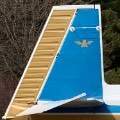
Handheld Transceivers - Which one to buy?
Jerry 5TJ replied to Skywarrior's topic in Miscellaneous Aviation Talk
I carry an antique Terra TPX-720 in the Mooney. It has full size headset and microphone connectors, which is convenient. But my post is about batteries, not radio type: I keep alkaline batteries in the handheld, and rotate them out every annual. Alkaline battery shelf life is several years. Rechargeable battery packs tend to discharge a few percent per week, even with no use, and it is hard to tell when the pack's capacity is diminished. -
Suggestion: How about listing Mooney aircraft for rent? My own Mooney is based in CA but I used to rent an M20S at BWI for travel in the east -- I would fly into BWI commercial, ride the shuttle around the field, fly out in a nice Mooney. Great for trips up and down the east coast. However that FBO went under in 2008 and the plane is gone. Anyone know of a Mooney for rent in the mid-Atlantic area? Or, for that matter, does anyone care to list a rental Mooney near any major airline-served airport?
-
I worked at the Communications Division of what was Bendix in the 1980's and 1990's, and here's what I recall of the BX2000 series: One, the BX2000 was not part of the King line and was not designed or built at the King Radio facility in Olathe, Kansas. Bendix developed the BX2000 system before the King acquisition. Bendix had a long history of building avionics – in fact a majority of all US WWII aircraft radios were built in the Bendix factories in Baltimore. But by the 1970s the Bendix avionics line was lacking in general aviation offerings. So they built the BX2000 line. That went so well that Bendix bought King Radio to get a more suitable GA line-up. The BX2000 system was advanced for its day in that it included two Nav and two Com radios plus a marker beacon receiver, glide slope receiver, power supplies and audio switching all in one box. In addition the OBS units were digital with no moving parts, using a bar graph gas-discharge displays. The good news is that it was all well designed and integrated. It was neat and easy to harness up and install. The not so good part is when it fails you can lose all radios at once. In addition to the main box (the CN-2011) there were also ADF, DME, transponder and RNAV components in separate boxes. There's a review of the system demonstrated in a single engine aircraft from Flight International of 1978 -- see http://www.flightglobal.com/FlightPDFArchive/1978/1978%20-%201132.PDF and http://www.flightglobal.com/FlightPDFArchive/1978/1978%20-%201133.PDF At the time a dual NavCom was considered a full IFR panel so a Cessna with RNAV, DME and all of it new and digital seemed, well, almost too complex for single pilot operations. The article glowingly comments that 9 custom ICs were developed for the BX2000, and that the system MTBF may be as good as 1,500 hours. At this point BX2000 spares are not likely to be easy to find, either, as this system is all based on circa 1975 components. Cooling air is always helpful to keep the BX2000 alive and (not) cooking. A BX2000 in the panel of a 1970s Mooney could be a good period restoration. I'd keep a portable GPS & transceiver hidden under the seat, however.
-
Quote: ATB Yep, the only 2 things that are missing from "my perfect Mooney" are an HSI/aspen and a 330 transponder.
-

Replacement for KX165......Suggestions?
Jerry 5TJ replied to Earl's topic in Modern Mooney Discussion
Another alternative is to get rid of the KX-165 and install an Icom IC-210. It is a good radio, and is inexpensive. Of course you will have to change the wiring and rack. The Icom offers VHF communicaions only, no VOR navigation capability. It has a nice, large-digit display LCD screen so we, er, more mature pilots can see it easily, too. -
Quote: Mitch I do believe that in your E model, the system is actually 12 volts DC. The Zeftronics folks feel that a charging voltage of around 13.8 - 14.2 volts is optimum for keeping your battery charged, but not overcharging.
-
I had an M20S that was equipped with speed brakes. I think they are mis-named. They are not speed brakes like the massive surfaces you see sticking out on your FA-18 or MiG-29. These are about the size of your four fingers, from top of palm to the tips of your spread fingers. Perhaps if we called them "descent aids" there would be less misconception. My recollection -- The M20S speed brakes, when deployed in level flight at 150 KIAS at medium cruise power, would result in a descent of about 500 fpm, still at medium cruise power and still at 150 KIAS. When popped up at 80 KIAS in landing configuration, it was hard see any difference in glide path. On landing roll, with all three wheels on the pavement I suspect there was no discernable change in roll-out distance.
-
Quote: Mitch After we got out of the plane, I learned from some other folks that we were not alone thinking EVERYONE was watching our landing. Funny.
-
Quote: M016576 Jerry- You'll want the watch when you lose your generator in IMC: trust me on that. -Job
-
You still wear a watch!?!? That's so twentieth century. The GPS keeps pretty darn good time.
-
From the album: N5911Q
-
From the album: N5911Q
-
From the album: Mooney Wingtip
-
From the album: Mooney Wingtip
-
From the album: Mooney Wingtip
-
I recently bought a set of landing gear rigging tools, one each for the main and nose gear preload testing. These are new tools, made by an Arizona-based Mooney "F" owner who does CNC machining. He made several sets and they are for sale on EBAY. Check out EBAY item number 260621786655. The tools look fine and they fit my "C" perfectly. Cheaper than factory tooling by a half. An alternative to renting the tools with about four years ROI. Disclaimer: I didn't know Craig before I saw these rigging tools on EBAY, I paid his asking price and got no discount for this blurb.
-

Windshield downtube paint chipping off
Jerry 5TJ replied to Geoff's topic in Modern Mooney Discussion
I used bicycle cork handlebar tape to cover the steel tube. The tape covers the wires to the compass light, and makes for a nice feel when you use that downtube as a handle. I used black but there are lots of nice colors available at your local bike shop. Cost was 0.004 AMU. -
If the battery voltage on a six-cell lead-acid battery falls much below 10.5 volts when loaded and at normal temperature, there is just about zero capacity left. If at the end of flight the bus voltage falls to that level on final with RPM above 1700 that implies either the system is not charging, or the battery is defective. I'd guess the latter, but check all the key groundand wiring connections while you're at it. The battery voltage should rise to about 14.2 to 14.4 when charging during flight. If it does not, look at the charging system components -- generator, generator controller, wiring. If you don't have a panel-mounted voltmeter, you can use one of those cigarette lighter mounted meters to watch the voltage. Check EBAY or the local auto store.
-

New or used avionics? New or dated technology?
Jerry 5TJ replied to scottfromiowa's topic in Vintage Mooneys (pre-J models)
Re the GX50 and similar -- you need current database updates loaded to be IFR legal, and I don't think data cards for those II Morrow orphans are available from Garmin at all. Yes, the GX50 displays are no longer available, either. I just noticed on the Garmin site that the GNS430 and GNS530 are listed as "discontinued" models, too; only the -W versions are current production. -

What's your Useful Load?
Jerry 5TJ replied to scottfromiowa's topic in Vintage Mooneys (pre-J models)
My 1965C has a useful load of 989 pounds out of a 2575 pound gross. That figure is after correcting some errors in W/B sheets entered in the logs in decades past. My previous T210 would haul 1000 pounds in the cabin even with all 90 gallons of fuel aboard. But flying it ate AMUs at a fierce rate. -

Lycoming Echelon M20E/F/J engine upgrade
Jerry 5TJ replied to Grant's topic in Modern Mooney Discussion
Better yet, get an engine that will run on unleaded gas. -
I was coming north a few weeks ago from Southern California and I noticed that the old OAT, the one sticking through the windscreen, showed 0C while flying in the clouds. There was visible rain beading on the windscreen, but no ice at all. That's odd, I thot. Just recently I put in a new Davtron M803 to replace the long-dead "8 day" clock. The Davtron has a voltmeter(very nice) and an OAT with a remote probe along with the timers and clock. I found out why no ice formed at 0C on the old Scott OAT -- it was reading about 4 C too low. Gee, it is only 45 years old. Moral of the story is obvious -- these are old airplanes and their parts are getting tired. Some parts are more tired than other. A good OAT is critical when flying in clouds. Suggest you check yours for accuracy and/or get another.
-
I'll vote with the "pull out the ADF and toss it" gang. That's what I did, and I put a second transponder in the space freed up. A second transponder is a whole lot more useful for IFR flying in the USA today than an ADF. Throw out that Loran too, while you are at it. Carry a portable GPS and a battery powered VHF handheld transceiver for backup. Yes, if you want to cross the Atlantic in your Mooney and fly the back NDB approach up that fjord in Iceland just like Ernie Gann in Fate is the Hunter, keep the dang thing.
-
"An airplane accident is the simultaneous loss of airspeed, altitude and ideas."


